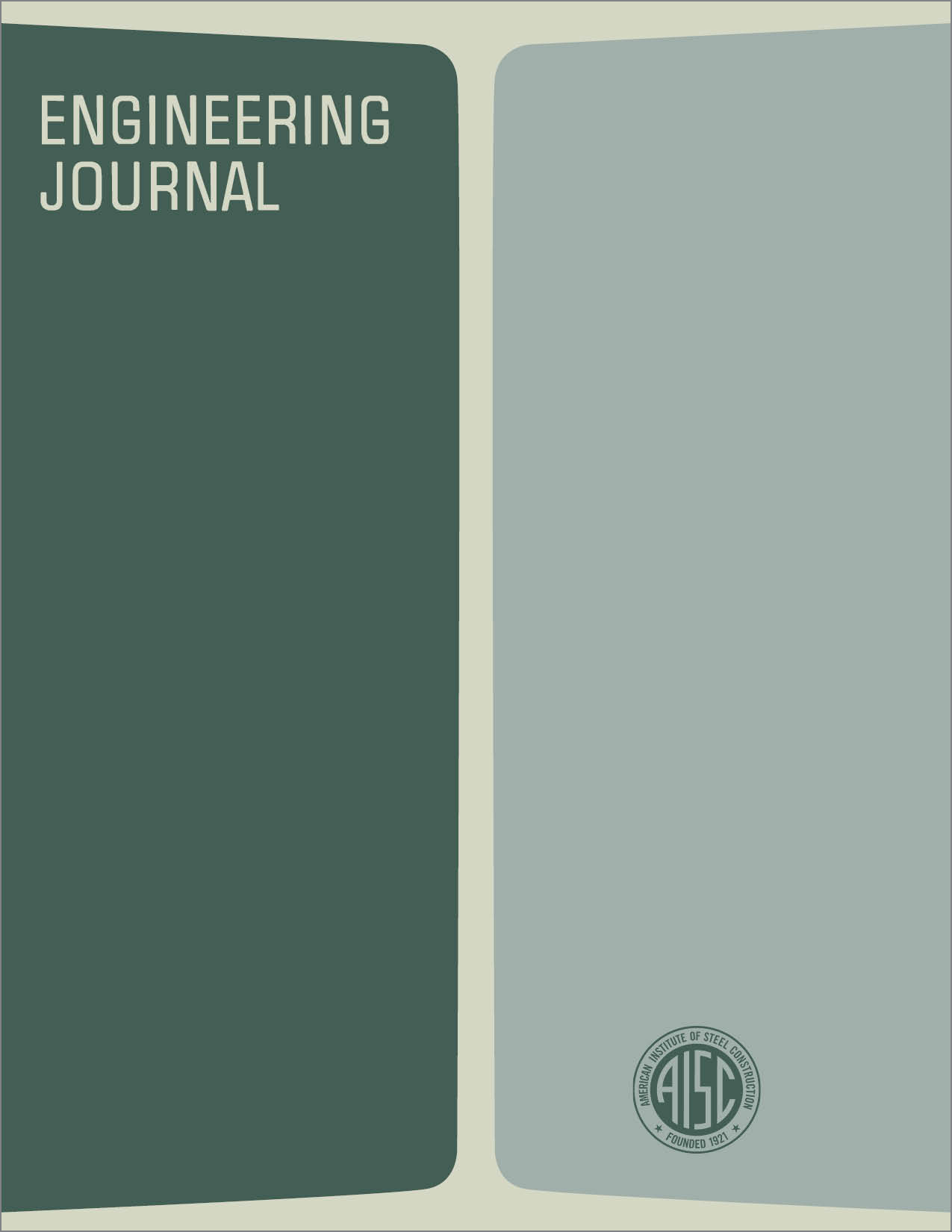Plastic Behavior of Eccentrically-Loaded Connections
DOI:
https://doi.org/10.62913/engj.v8i2.162Abstract
Structural connections are generally designed on the basis of their ultimate strengths. This has always been so, even though design methods might seem to suggest that stress is the criterion. However, there are probably very few connections of any kind in which stresses at some location have not reached the yield point during construction or under design loads. As a matter of fact, if connection material were not ductile and could not yield, connections and their method of design would have to be completely revised. Present "elastic" design methods work because ductile behavior is assumed implicitly and design stresses are based upon the distribution of stress when local yielding occurs. For example, centrally-loaded connections are assumed to be stressed uniformly throughout the joint but distribution at working loads is not uniform even in the simplest of connections. For that matter, in a single rivet or bolt or in a single spot of weld there are steep stressgradients and stress concentrations. In addition, there is a great variation between individual fasteners or between different areas in the same weld. When the connection begins to yield, however, the stresses become quite uniform. "Elastic" analysis has been used as the basis for design because it involves reasonably simple calculations which lead to safe designs, even though it is known that the results in many cases are more conservative than necessary and that the calculated stresses are not representative of the actual stresses by a wide margin.

